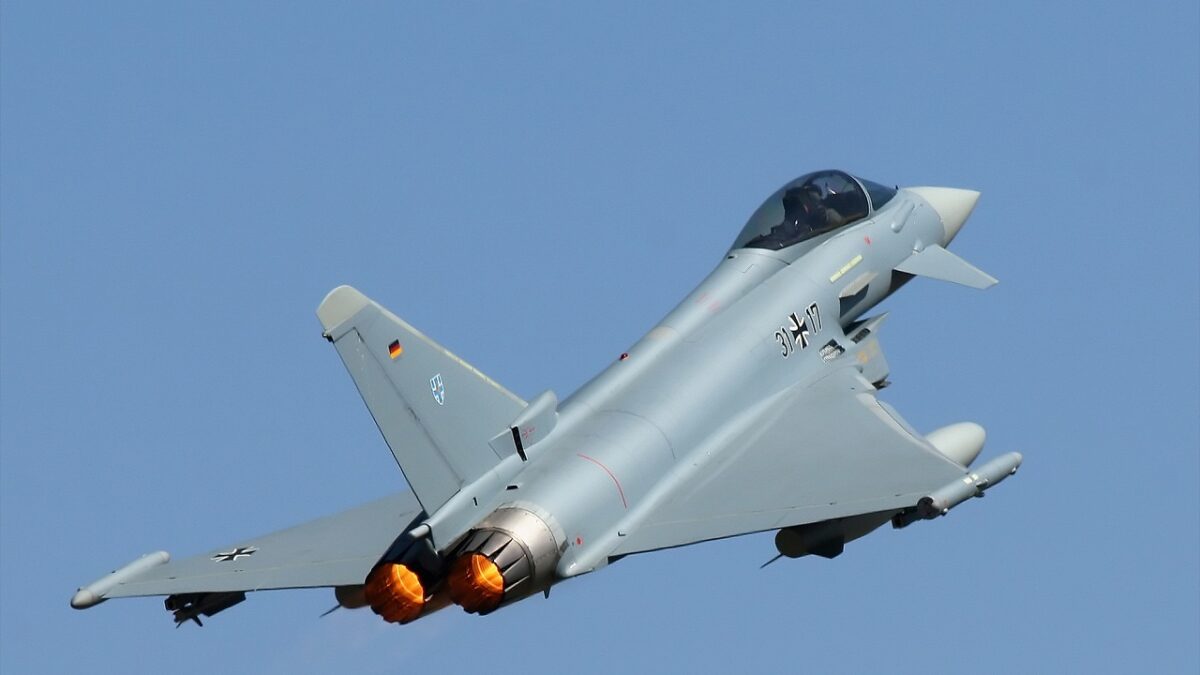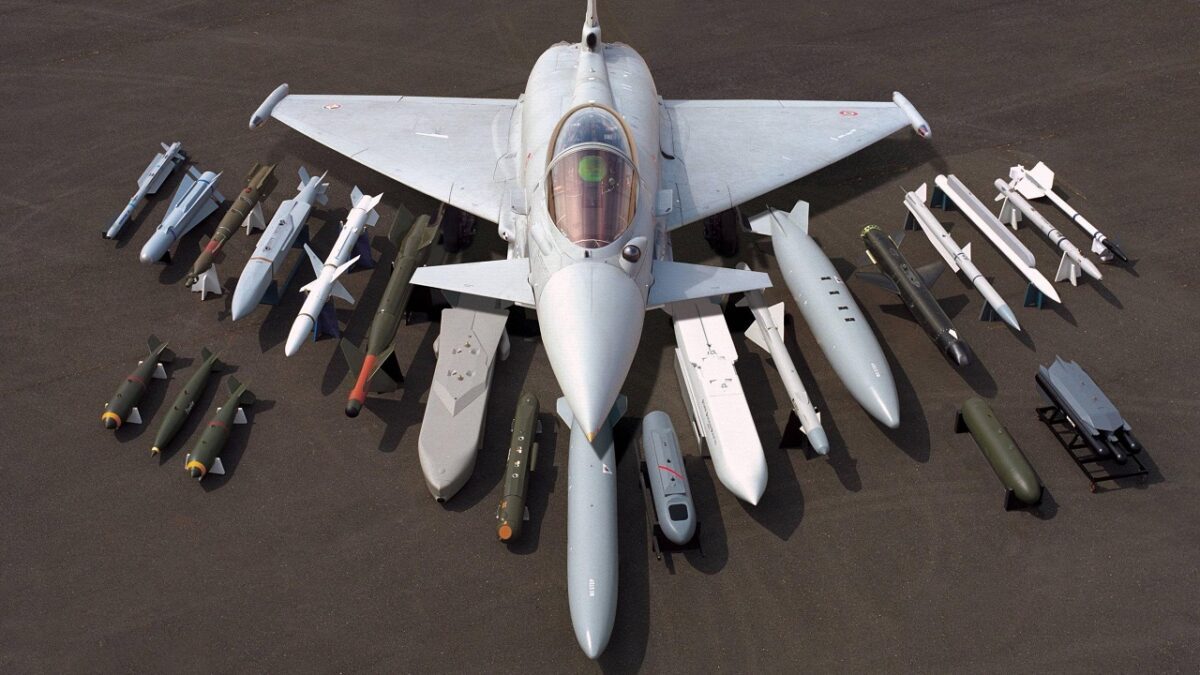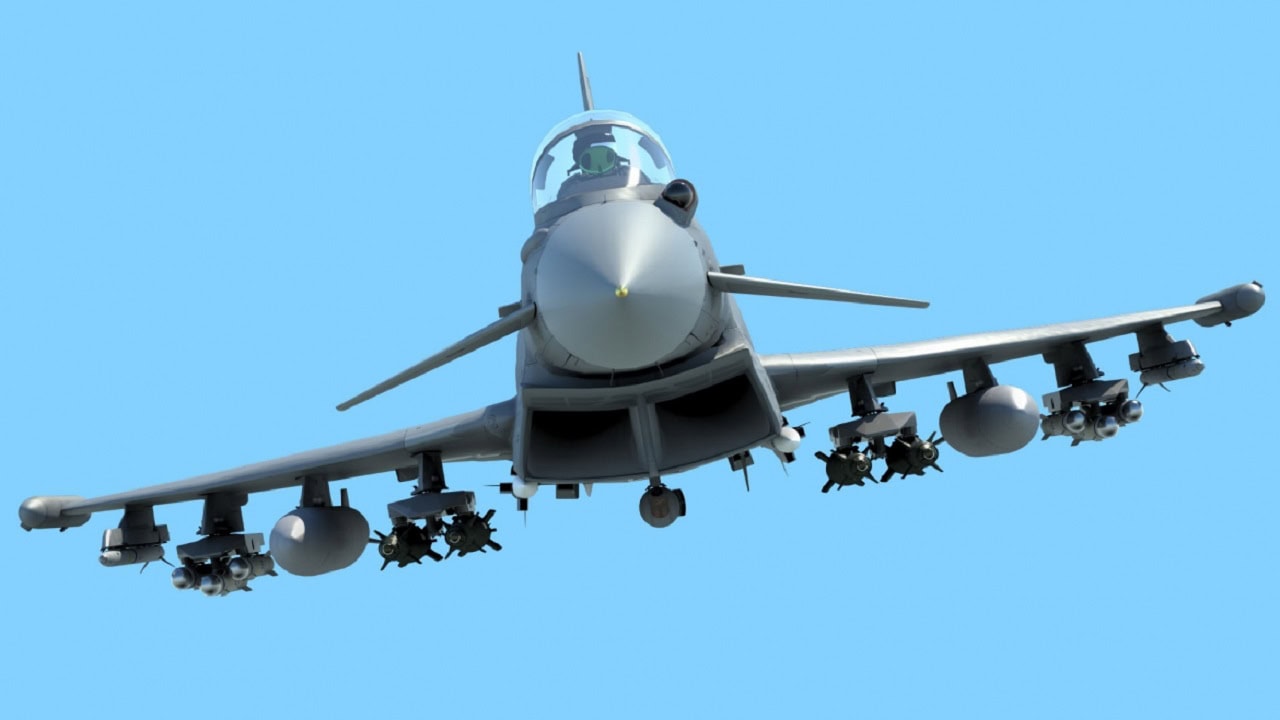Meet the Eurofighter Typhoon: There is a saying that “a camel is a horse designed by committee,” meaning that a group effort delivers a disjointed, subpar product. This was probably a concern when the Eurofighter consortium was established in June 1986. It initially involved Germany, Italy, and the United Kingdom, with Spain joining later. It would have been reasonable to worry whether the project could meet all of its members’ demands.
No worry was needed, though. The European countries came together to produce a highly capable air defense fighter. It might even be suggested that the Eurofighter Typhoon took the world by storm when it was first unveiled in the early 1990s. Not only did it prove to be superior in all respects to the latest generation of Soviet/Russian aircraft that were entering service at the time, but it also became a highly exported fighter that was adopted by several international partners.
Program Turbulence
Despite the ultimate success of the program, it was not always an easy effort. The project was delayed by the financial burdens reunification placed on Germany. Chancellor Helmut Kohl even made an election promise to cancel the program entirely. But because of the vast sums already invested, and the number of jobs that depended on the Eurofighter program, Germany remained a crucial partner.
Today, the Eurofighter supply chain supports 100,000 jobs across 400 European companies. It remains the largest European collaborative defense program to date.
Program Takes Shape
Originally named the European Fighter Aircraft, or EFA, the project yielded a total of seven development prototypes, the first of which finally made a maiden flight in March 1994.
Early work on the EFA defined the basic concepts, which included an unstable aerodynamic configuration with canard fore-planes; active digital fly-by-wire controls; extensive use of carbon-fiber composites and other advanced materials; a hands-on throttle and stick cockpit; advanced avionics; multi-function cockpit displays; and direct voice command input. Many of these technologies were first tested utilizing a full-scale demonstrator.
Just 15% of the Typhoon’s surface consists of metal. In total, 75% of the aircraft is fabricated from carbon-fiber composites. This enhances its stealth from radar-based systems.
Unstable At Any Speed
The Typhoon is unique in that it employs a deliberately unstable aerodynamic configuration, as well as efficient supersonic capability. An intentionally unstable design yields much greater agility at subsonic speeds, as well as reduced drag and an overall increase in lift for enhanced short takeoff and landing performance.
Experienced pilots helped develop the aircraft, aiming to combine enhanced maneuverability with highly intuitive flight. However, the instability in subsonic flight requires a complex flight control system to support the pilot – the computer systems can react more quickly at lower speeds.
Protection For The World Cup
Qatar became the most recent operator of the Typhoon earlier this summer, and the aircraft will be providing critical security support for the FIFA World Cup, which is scheduled to kick off in the Middle Eastern nation in late November.

German Air Force Eurofighter. Image Credit: Creative Commons.

Eurofighter Typhoon. Image Credit: Creative Commons.
A joint RAF-Qatari Typhoon squadron departed earlier this month to support the Qatar Emiri Air Force with air security operations. The Eurofighter will be flying from the same air base as the French-built Rafale and the Boeing F-15, presenting an opportunity to showcase the platform in the region.
A Senior Editor for 1945, Peter Suciu is a Michigan-based writer. He has contributed to more than four dozen magazines, newspapers, and websites with over 3,000 published pieces over a twenty-year career in journalism. He regularly writes about military hardware, firearms history, cybersecurity, and international affairs. Peter is also a Contributing Writer for Forbes. You can follow him on Twitter: @PeterSuciu.

